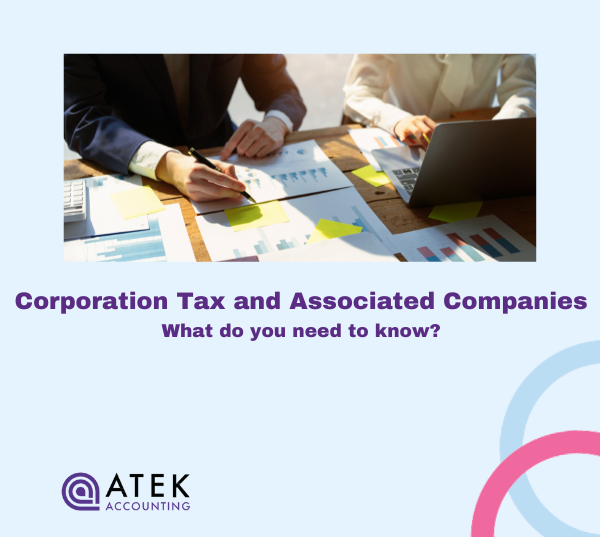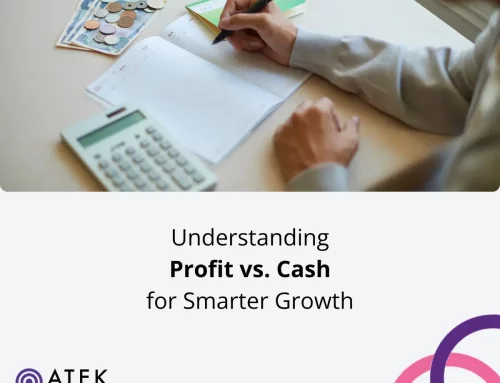Rates and rules you need to know about corporation tax for associated companies.
As of April 1, 2023, the main rate of Corporation Tax increased to 25%. But, as with most things in tax, it’s not always that straightforward — and your business might still be missing out on valuable deductions.
Here are the corporation tax rules and rates for associated companies.
Corporation Tax Rates
Since April 1, 2023, corporation tax rates are as follows:
-
On profits of £0 – £50,000:
Taxed at the Small Profits Rate of 19%. -
On profits of £50,001 – £250,000:
An effective marginal rate of 26.5% applies to this band of profits, but relief is available. -
On profits over £250,000:
Taxed at the main rate of 25%.
If a company has one or more associated companies in the accounting period, then the limits are divided by the number of associated companies plus one.
For an accounting period of less than 12 months, the lower limit and the upper limit are proportionately reduced.
Good old associated companies make a comeback
A company is another company’s associated company in an accounting period if it is an associated company for any part of the accounting period, even if they are associated companies for different parts of the accounting period.
A company is an associated company of another at any time when one of the two has control of the other or both are under the control of the same person or persons.
| Example
Mark owns three separate companies that each let out commercial properties. As Mark directly controls three companies, there will be three associated companies. These rules can be highly complex, but, in simple terms, the rights of others, particularly direct blood relatives and spouses or civil partners, are taken into account when determining control. This is known as ‘attribution’. The rules can also apply to common control by loan creditors and trustees in specific situations. |
| Example
Mark owns a holding company with three trading subsidiaries. As Mark directly controls four companies, there will be four associated companies. Mark’s daughter, Emily, controls a separate limited company. Since Mark and Emily are associates, the rights of each are attributed to the other, and so each is deemed to control five associated companies. If Mark’s companies are ‘commercially independent’ from Emily’s company, then the attribution rules will not apply, meaning that Emily controls one company and Mark controls four. However, if Emily acts under Mark’s direction, all five companies could still be associated (ignoring attribution), as control includes any form of indirect control. |
Substantial commercial interdependence
However, where there is no substantial commercial interdependence between the companies concerned, the attribution of the rights of others is ignored.
The following factors are to be taken into account, namely the degree to which the companies are financially, economically, and organisationally interdependent.
Two companies are financially interdependent if, in particular, one gives financial support (directly or indirectly) to the other or each has (directly or indirectly) a financial interest in the other’s activities.
Two companies are economically interdependent if, in particular:
-
They seek to realise the same economic objective.
-
The activities of one benefit the other.
-
Their activities involve common customers.
Two companies are organisationally interdependent if, in particular, they have common management, employees, premises, or equipment.
The word substantial is not defined.
Close Investment Holding Companies
Close Investment Holding Companies (CIHC) do not benefit from the small companies rate. In particular, a close company is a CIHC unless, throughout the accounting period, it exists wholly or mainly:
-
To carry on a trade or trades on a commercial basis.
-
To make investments in land, where the land is, or is intended to be, let to persons other than:
-
Any person connected with the relevant company;
-
A person who is:
-
The spouse or civil partner of a connected person;
-
A relative of a connected person;
-
The spouse or civil partner of a relative of a connected person;
-
A relative of the spouse or civil partner of a connected person; or
-
The spouse or civil partner of a relative of the spouse or civil partner of the connected person.
-
-
| Example
Mark owns three separate companies that each let out commercial properties. As Mark directly controls three companies, there will be three associated companies. One of the companies lets property to Mark’s sister, who uses it in her business. This company will be a CIHC, as it lets property wholly or mainly to a connected party. |
Beware of the impact of associated companies on installment payments
The number of associated companies may also affect whether and when corporation tax is payable quarterly. The rules will be used to determine whether or not a company is a large or very large company for the purposes of the quarterly instalments for accounting periods beginning on or after April 1, 2023.
| Example
Mark’s wife, Marie, owns a trading company. As Mark and Marie are associates, the rights of each are attributed to the other, and so each is deemed to control two associated companies. If the two companies are ‘commercially interdependent’, then the attribution rules will apply. If both companies made £1.4 million in profit, the previous CT charge would have been 19% and neither company would have had to pay instalments quarterly as they were not grouped. However, the associated company issue will reduce the quarterly instalment profit threshold to £750,000 each (£1.5 million for two associated companies), meaning that in the future both companies will be subject to a 25% CT charge, which will have to be paid quarterly. |
Navigate Corporation Tax Rules With Atek
As you can see, the rules can be complex, so please get in touch to discuss issues you might have in your businesses related to accounting for associated companies and the impact of corporation tax. We would be happy to advise.
More resources:














